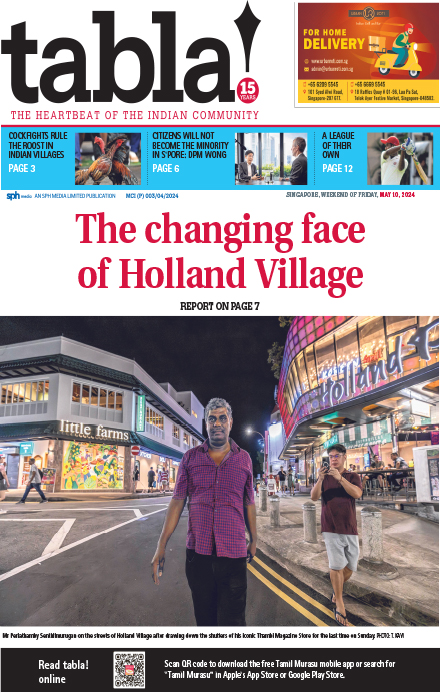The annual appearance of Durga Puja, which fell from Oct 20 to 24 this year, has provided a source of festive continuity with my life in Kolkata since I arrived in Singapore almost four decades ago.
I was in my late 20s and eager to find a place in a new country without giving up the sense of myself that had evolved naturally in a great Bengali city defined by the worship of two iconic mother-goddesses, Kali and Durga.
The pujas devoted to them every year renewed the idea of Bengalis as a people, no matter where they lived: in West Bengal, or elsewhere in India, or Bangladesh, or elsewhere in the world.
Durga Puja, in particular, was an eclectic cultural phenomenon that drew admiring crowds that toured Kolkata over five days to observe the magnificently erected pandals, or pavilions, in which Mother Durga and her four children – Lakshmi, Saraswati, Ganesh and Kartik – are worshipped. The pandals vied with one another in inventive agency as they drew their architectural motifs from the ebb and flow of Bengali life.
The scale and grandeur of the pavilions, the imaginative lighting that made them beacons for the homing soul after dark, the crowds that navigated their mortal passage through the precincts as they glimpsed the divine – all these made Durga Puja not only an event but a phenomenon. Sound matched sight when dhakis, or drummers, beat all hearts into a common rhythmic frenzy during arati, the ritual dance worship.
Anjali, the offering of flowers enfolded in prayerful palms, signified the release of possession into faith. Women played a leading role in bringing Durga – a woman, after all – into the lives of men.
Bijoya Dashami, the last day of the puja when the deities are immersed in the river, was a moment of great sadness. Durga left as predictably as she had come, and it would take another year to be able to fete her.
However, since years always arrive, her presence became a part of the cyclical reassurance of time: She would return. Human life was different: It was linear.
True, children would be born, they would grow up, they would have children of their own, they would gather to welcome the goddess, and Durga Puja would continue.
However, the ageing who were at the head of the linear queue wondered: How much longer would they live to celebrate the divine cyclicality of the puja? Would this puja be their last? What then?
So it is in Singapore. I am in my late 60s. I have begun to think of Durga Puja without me. It is bound to occur one day. O dear! Poor me.
This is not an idle worry. The Ramakrishna Mission at Bartley Road, a sanctuary in which I have recovered my Bengali/Indian past during Durga Puja, is a good index of the mortal condition. The prayer room on the first floor was crowded as usual during the Saptami (seventh-day) devotions on the morning of Oct 21.
As usual, I was late. As usual, someone made space for me on one of the chairs on the left side of the room, where the men sat. I nodded in gratitude. Then I looked around. There were many young faces that I had not seen before. I am blessed.
There were children who had grown up, but I could recognise them through their thin moustaches and studious glasses. My blessings do not end. There were familiar faces with receding chins and expanding waistlines (like mine). Welcome to the blessings of seniority, tired comrades. But some faces were absent. Were they too busy to have come? Were they travelling? Were they sick? Were they...?
And so it will be with me one day. Someone may wonder what has happened to me.
Meanwhile, the next Durga Puja awaits, whether at the Ramakrishna Mission or at the many other venues where Ma Durga is venerated in Singapore. As in Kolkata, as in Dhaka, as in Delhi, as in Sydney, as in London, as in New York, as in anywhere where Bengalis breathe, Durga will be a part of cyclical time.
Linear lives need only to acknowledge their mortality – and look upwards.



